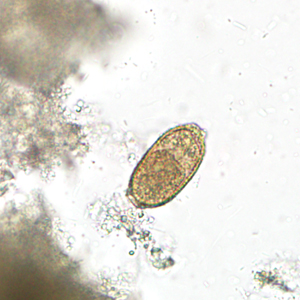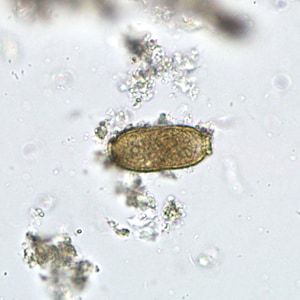
Case #132 - May, 2004
Stool specimens were collected for routine ova-and-parasite (O&P) examination by a local health department as part of a refugee screening program. Specimens were collected in 10% formalin and polyvinyl alcohol (PVA) and sent to the state health laboratory for processing and examination. No patient identifiers or other history was obtained by the state health lab. Figures A and B show what was observed in low numbers in the stool of one of the patients. The objects measured on average 40 micrometers long by 23 micrometers wide. What is your diagnosis? Based on what criteria?

Figure A

Figure B
This case, and the specimen from which images were taken, are courtesy of the Vermont Department of Health Laboratory.
Images presented in the monthly case studies are from specimens submitted for diagnosis or archiving. On rare occasions, clinical histories given may be partly fictitious.
DPDx is an educational resource designed for health professionals and laboratory scientists. For an overview including prevention, control, and treatment visit www.cdc.gov/parasites/.